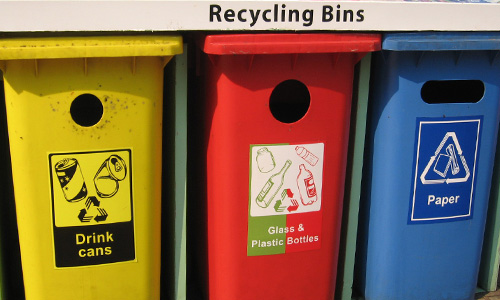"Recycling has been relentlessly promoted as a goal in and of itself: an unalloyed public good and private virtue that is indoctrinated in students from kindergarten through college," writes John Tierney, writer of the Findings column for the New York Times Science section. "As a result, otherwise well-informed and educated people have no idea of the relative costs and benefits."
Environmentalists promoted recycling as an economic argument initially, billing it as producing an economic savings when oil was costly and believed to be scarce, and landfills were supposedly overflowing. Once the world uncovered vast new oil resources and discovered landfills could be converted into parks and other useful land space, the cost-benefit of recycling turned negative.
With the economic rationale gone, advocates for recycling have switched to environmental arguments. Researchers have calculated that there are indeed such benefits to recycling, but not in the way that many people imagine.
Advocates now promote recycling as an environmental argument, particularly to reduce emissions of greenhouse gases. But some recyclables increase greenhouse gases rather than reduce them.
According to the E.P.A.'s estimates, virtually all the greenhouse benefits — more than 90 percent — come from just a few materials: paper, cardboard and metals like the aluminum in soda cans. That's because recycling one ton of metal or paper saves about three tons of carbon dioxide, a much bigger payoff than the other materials analyzed by the E.P.A. Recycling one ton of plastic saves only slightly more than one ton of carbon dioxide. A ton of food saves a little less than a ton. For glass, you have to recycle three tons in order to get about one ton of greenhouse benefits. Worst of all is yard waste: it takes 20 tons of it to save a single ton of carbon dioxide.
The author puts plastic recycling into perspective:
To offset the greenhouse impact of one passenger's round-trip flight between New York and London, you'd have to recycle roughly 40,000 plastic bottles, assuming you fly coach. If you sit in business- or first-class, where each passenger takes up more space, it could be more like 100,000.
There is a better way for the "socially conscious, sensible person" to respond to recycling, argues the author:
It would be much simpler and more effective to impose the equivalent of a carbon tax on garbage, as Thomas C. Kinnaman has proposed after conducting what is probably the most thorough comparison of the social costs of recycling, landfilling and incineration. Dr. Kinnaman, an economist at Bucknell University, considered everything from environmental damage to the pleasure that some people take in recycling (the "warm glow" that makes them willing to pay extra to do it).
He concludes that the social good would be optimized by subsidizing the recycling of some metals, and by imposing a $15 tax on each ton of trash that goes to the landfill. That tax would offset the environmental costs, chiefly the greenhouse impact, and allow each municipality to make a guilt-free choice based on local economics and its citizens' wishes. The result, Dr. Kinnaman predicts, would be a lot less recycling than there is today.
To environmentalists who view recycling as a near religious ritual akin to “the ones performed by Catholics to obtain indulgences for their sins,” however, such a smart economic and environmental policy is pure heresy.
Source:
The Reign of Recycling, John Tierney, New York Times, Oct 3, 2015

